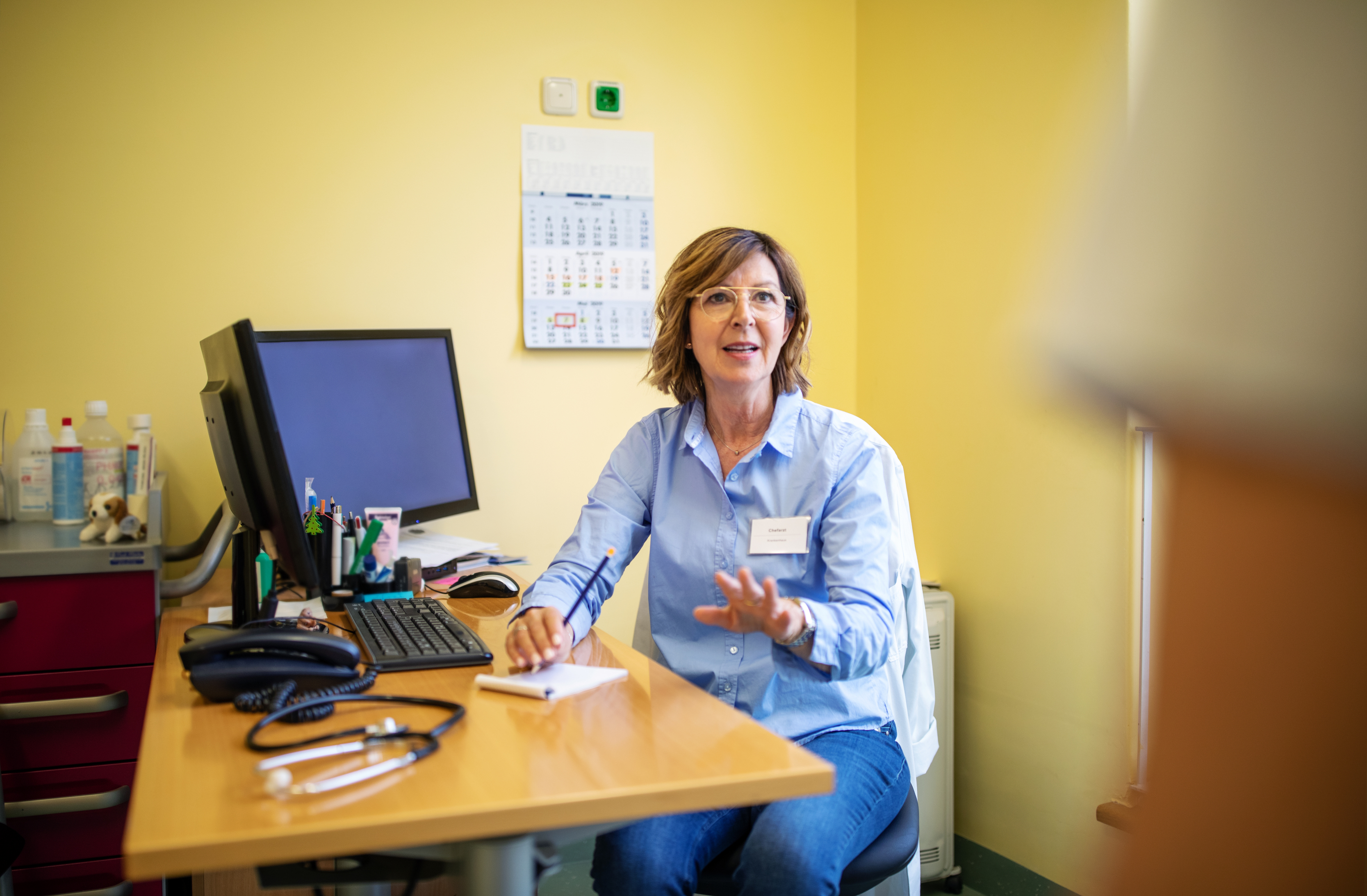
Health & Medicine
Online approach works in treating knee osteoarthritis

For many with chronic illness, the shift to telehealth during the COVID-19 pandemic has given them more freedom and control over their lives
Published 19 April 2021
My daughter, Naomi, has lived for many years with a diagnosis of Myalgic Encephalomyelitis (ME), more commonly known in some countries as Chronic Fatigue Syndrome, or ME/CFS.
She also has another condition called Postural Orthostatic Tachycardia Syndrome (POTS). It is a type of dys-autonomia, a group of conditions that affect the body’s ability to regulate the functions we don’t consciously manage, like heart rate, body temperature, and pupil dilation. The conditions of ME/CFS and POTS are overlapping and often come together.

ME/CFS is estimated to affect 0.4 to one per cent of the population, so up to 250,000 Australians. POTS is estimated to affect 0.2 to 0.8 per cent of the population, so up to 200,000 Australians, including possibly one to 100 teenagers.
Naomi has not been well enough to attend school full-time since she was in Grade Two. She is now 23. That’s a very long time to be ill.
Because both conditions affect the functioning of the whole body, Naomi suffers with muscle and joint pain, headache, sleep difficulties, gut problems, skin rashes and infections, nausea, swollen glands, blood pressure and heart rate problems, circulation problems, brain fog, memory problems – and the list goes on.

Health & Medicine
Online approach works in treating knee osteoarthritis
There’s limited understanding of either condition, and no known cure, so it’s just a matter of putting up with it and trying to treat the symptoms. Or so we thought, and had been told many times.
With all this going on, Naomi needs regular visits to her GP. She also needs treatment from many, many specialists.
It’s not just the normal sort of medical care you might get from your doctor if you’re sick. When you have a complex chronic illness, you have to go to the doctor for lots of test results, and for routine reviews.
These appointments often involve receiving bad news, or at least a reminder that your condition hasn’t improved. And then there’s the appointments for endless necessary admin – prescription repeats, referral letters, reports, medical certificates, and enhanced care plans the GP can write.

These appointments take up an enormous amount of time and effort for the person living with a chronic illness, but also for their carer.
When a lot of detailed feedback needs to be given to the doctor, and a lot of complex information is provided to the patient, it can be too much for just one person to manage.
Naomi gets so much more out of her appointments if I can join in and add to what she tells the doctor, as well as take notes about what the doctor advises. This is particularly important for patients whose symptoms include brain fog, memory problems and fatigue.

Health & Medicine
COVID-19 face coverings mask the message
Then there’s the financial cost of travel and parking, as well as missed work time.
Of course, sometimes if you have a chronic illness, you’re actually too sick to travel to the doctor. Or the travel and time sitting in waiting rooms can actually make you feel more ill.
COVID-19 is a serious threat to people with chronic medical conditions, who are at greater risk of significant complications, but, in Australia, the pandemic has given them wider access to telehealth services.
From our first lockdown in late March to October 2020, Naomi had 25 appointments with medical specialist and 25 appointments with her GP. The majority of these were by Telehealth.

Telehealth has become the norm very quickly for many GPs, specialists and their patients over the last year. From March last year, according to the Australian Institute of Health and Welfare, a third of all GP consultations (around 36 per cent) were delivered by telephone or video as there was a very rapid shift away from face-to-face consultations.
In fact, the increase in telehealth during COVID-19 has been an unexpected boon for many people out there with chronic health concerns. For many people, like Naomi, with chronic health conditions Telehealth provides more freedom and control.
Some health practitioners did have concerns about telehealth.

Business & Economics
How are Australia’s doctors faring during COVID-19?
It’s true that telehealth was easier when Naomi and I already knew the doctor. However, even for new doctors, the benefits of telehealth made it worthwhile. However, it’s also important to remember that virtual care delivery isn’t for everybody and that for many, in-person care delivery will also have a very important part to play.
But telehealth has made an enormous difference to Naomi, and to me and the rest of her family. It saved us effort, cost and, most importantly, time.
With so many symptoms to treat, Naomi already has limited free time to enjoy. Telehealth reduced the emotional strain because Naomi was able to relax at home and wait for the doctor to be ready.
After the appointment, we also had the time, space and privacy to de-brief if the doctor gave any unwelcome news. When I had to go to care for my mum after a hip replacement, I could also still attend Naomi’s telehealth appointment, even though we weren’t in the same place.

Anyone with a complex chronic health condition already has a lot to deal with. As do their carers.
For us, and many others out there with a complex chronic condition, the option to use telehealth makes life easier, gives the patient more time and makes health care more accessible.
For Naomi the benefits of telehealth meant that she was able to find out that perhaps her original diagnosis of ME/CFS was wrong, and that she actually has hypermobile Ehlers Danlos Syndrome and Mast Cell Activation Syndrome.

Health & Medicine
Is a delayed cancer diagnosis a consequence of COVID-19?
Again, these are poorly understood conditions, but we do know that they have a genetic basis, they often come together, and they often take too long to be diagnosed (as is the case for many rare childhood diseases).
But the good news is that there are, if not treatments, beneficial therapies. And, yes, you guessed it, some of these can now be accessed via telehealth. We hope it stays that way.
Equally, Brian Oldenburg, Professor of Public Health at the Baker Heart and Diabetes Institute and director of the NHMRC Centre of Research Excellence in CRE in Digital Technology to Transform Chronic Disease Outcomes notes that it’s also crucial that people with complex chronic conditions, like Naomi, understand when it is still important to see their health practitioner in-person.

For the government and health system, there’s still a lot of work to be done in this country to support health practitioners, and their patients to access their care, virtually.
It’s also the case that patients who are most disadvantaged and often living by themselves in the community will need additional human and e-resources to support the management of complex health issues by themselves.
Poor health literary and digital literacy are still major challenges in Australia and these also need much more attention.
But now that we are beginning to come out the other side of COVID-19, it’s very important that health practitioners understand the important benefits of virtual care delivery for their patients and how telehealth can enable their patients to live healthy and productive lives.
Banner: Getty Images